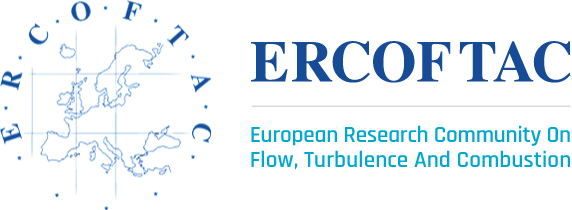The participants are strongly encouraged to apply their methodologies to one or more of the Workshop test cases. These are divided by categories. Results presented at the workshop will be compiled into summary reports and distributed to the participants.
1. Data-driven Turbulence Modelling
Test cases
Participants are encouraged to use the test cases from the NASA Turbulence modelling testing challenge. Links to the test cases and related requirements are given here: turb-prs2022.html
To be a valid entry, the same data-driven model must be applied to each of the given cases. Information about recommended training data will be given soon.
2. Reduced-order Modelling and Surrogate Modelling
Surrogate modeling of steady 2D airfoil flows
This test case is based on the AirfRANS dataset described in the NeurIPS 2022 paper: AirfRANS: High Fidelity Computational Fluid Dynamics Dataset for Approximating Reynolds-Averaged Navier–Stokes Solutions. It contains airfoil flows for various geometries, inflow velocities and angles of attack, simulated by solving the incompressible RANS equations.
The ultimate goal of the task is to be as accurate as Computational Fluid Dynamic (CFD) solvers while being drastically faster. The evaluation protocol is composed of three criteria:
More information can be found here: https://ml-for-physical-simulation-challenge.irt-systemx.fr/
3. Flow Control
Active drag control in a turbulent channel flow
The goal of this test case is to perform any type of active flow control (AFC) at the wall of a turbulent open channel at Re_tau=180. This test case is based on the following work, where deep reinforcement learning (DRL) is used to apply AFC in a turbulent channel and the DRL results are compared with opposition control: https://link.springer.com/article/10.1140/epje/s10189-023-00285-8
The ultimate goal of the task is to achieve the highest possible drag reduction in this configuration via flow control.
The evaluation criteria includes:
- Drag reduction achieved by the control
- Cost of the control (net energy savings)
- Difficulty of implementation of the control and interpretability of the control policy
The original paper contains a repository with the DRL code and the CFD setup. But any control strategy can be applied, not necessarily based on machine learning.
4. Reactive Flows
This test case is based on the DNS dataset of a sooting turbulent non-premixed flame with a large thermochemical state-space composed of 47 species in addition to temperature. The reference paper for the dataset is [A.Attili et al. Combustion and Flame 161 (2014) 1849–1865] www.sciencedirect.com/science/article/abs/pii/S0010218014000133
A snapshots for this dataset will be provided consisting of the complete thermochemical state-space, the mixture fraction, and the progress variable with its reaction rate (using standard definitions). In addition, a snapshot of the same flame at a different Damkohler number is also provided, see [A. Attili et al. Proceedings of the Combustion Institute 35 (2015) 1215–1223] www.sciencedirect.com/science/article/abs/pii/S154074891400087X
The complete dataset is available here: https://drive.google.com/drive/folders/0B3Ce1YWSn3fxcDZLU1YxR0pmTVE?resourcekey=0-aI1M1vL7Qh_39j9PcFVhww&usp=share_link
The objective of the task is to demonstrate the capability of a given approach to achieve significant dimensionality reduction. In particular, two aspects should be addressed:
- Demonstrate dimensionality reduction from the thermochemical state perspectives, hence mapping from full thermochemical states to a lower dimensional representation (finding manifolds) with a given error. It should be demonstrated that the low-dimensional projection applies to other conditions, hence for the present case on the same flame at a different Damkohler number.
- Predict a set of quantity of interest (QoI) based on the reduced thermochemical state representation. The QoI are, in a hierarchical order:
– the temperature T
– the hydroxyl radical mass fraction YOH
– the naphthalene mass fraction YC10H8 also denoted as A2 in the reference papers
– the reaction rate ω˙C of a progress variable C defined as follows: C = YCO2+YCO+YH2O+YH2
The evaluation criteria is based on the definition of an error, for a generic QoI ϕ, as: ϵ = ⟨||ϕq − ϕ||2⟩Z where ϕq and ϕ are the modelled local quantity and the true DNS value, respectively, || · ||2 represent the L-2 norm and ⟨·⟩Z represent the conditional average with respect to mixture fraction Z. The variable Z is also included in the dataset.
